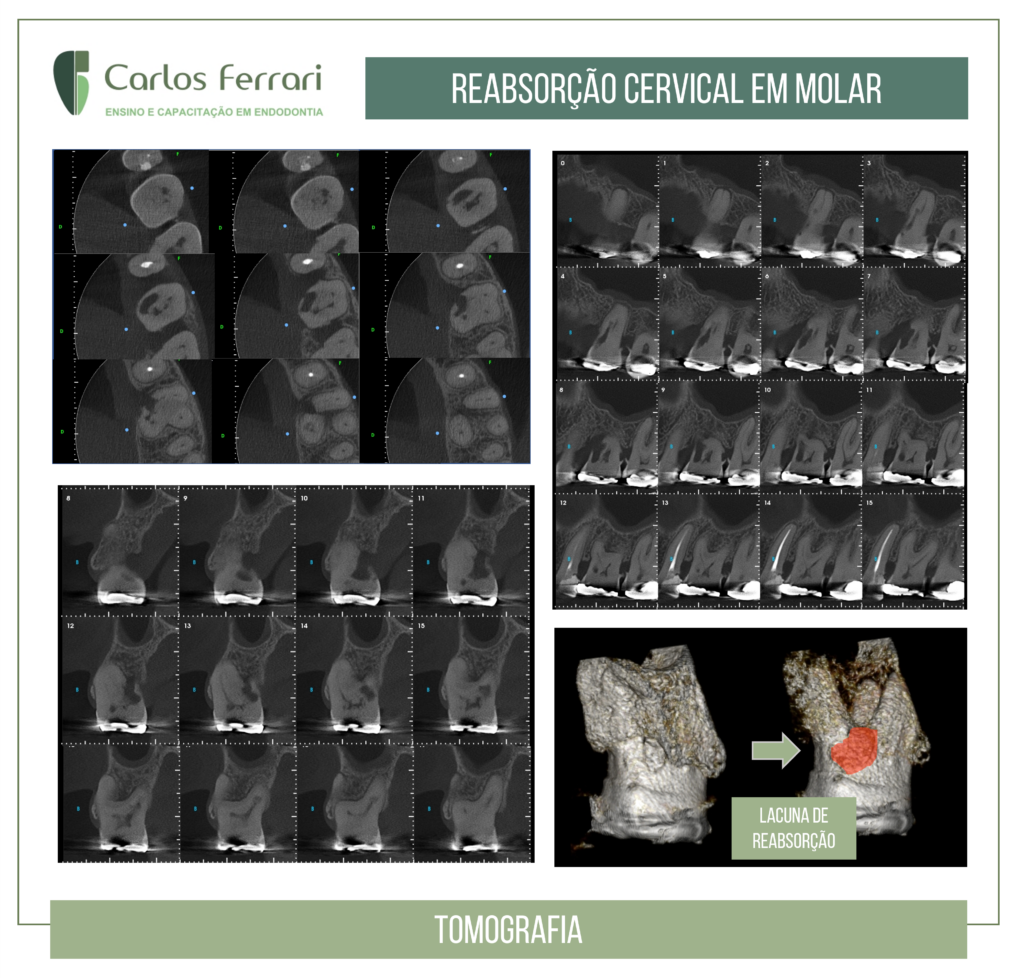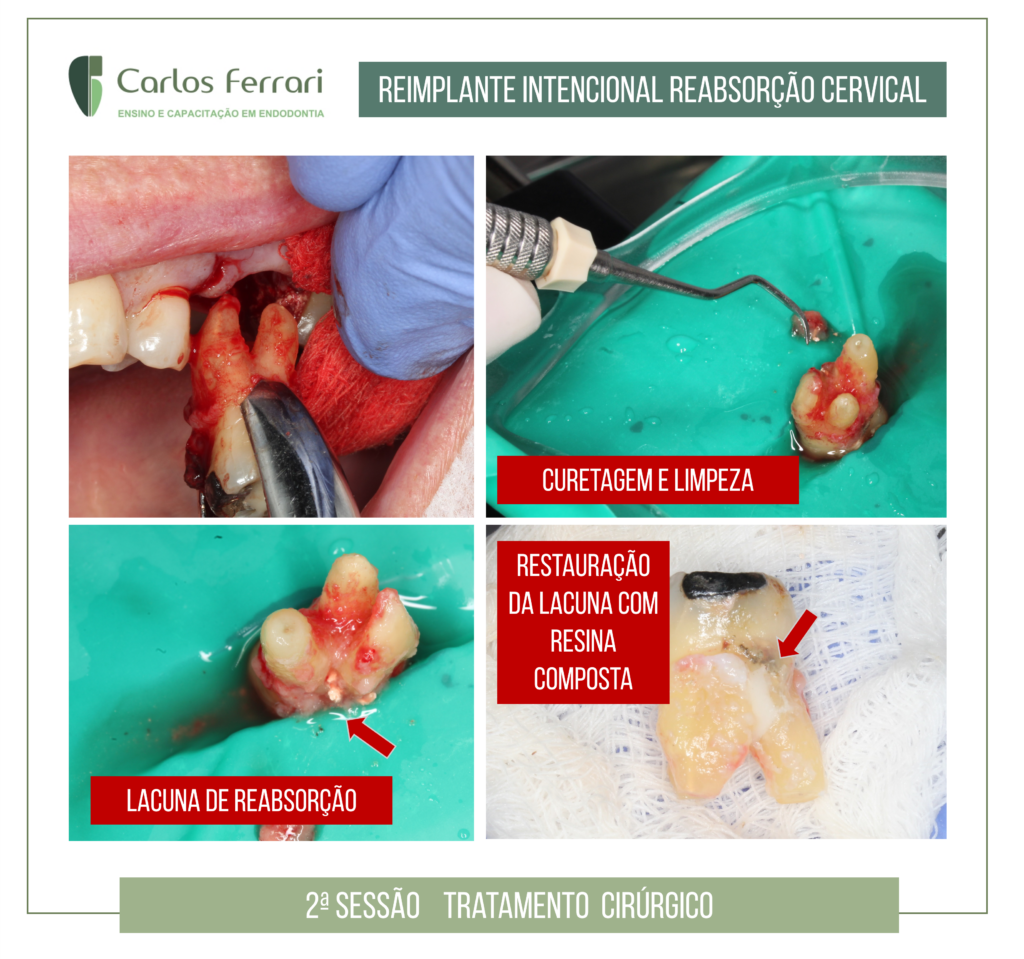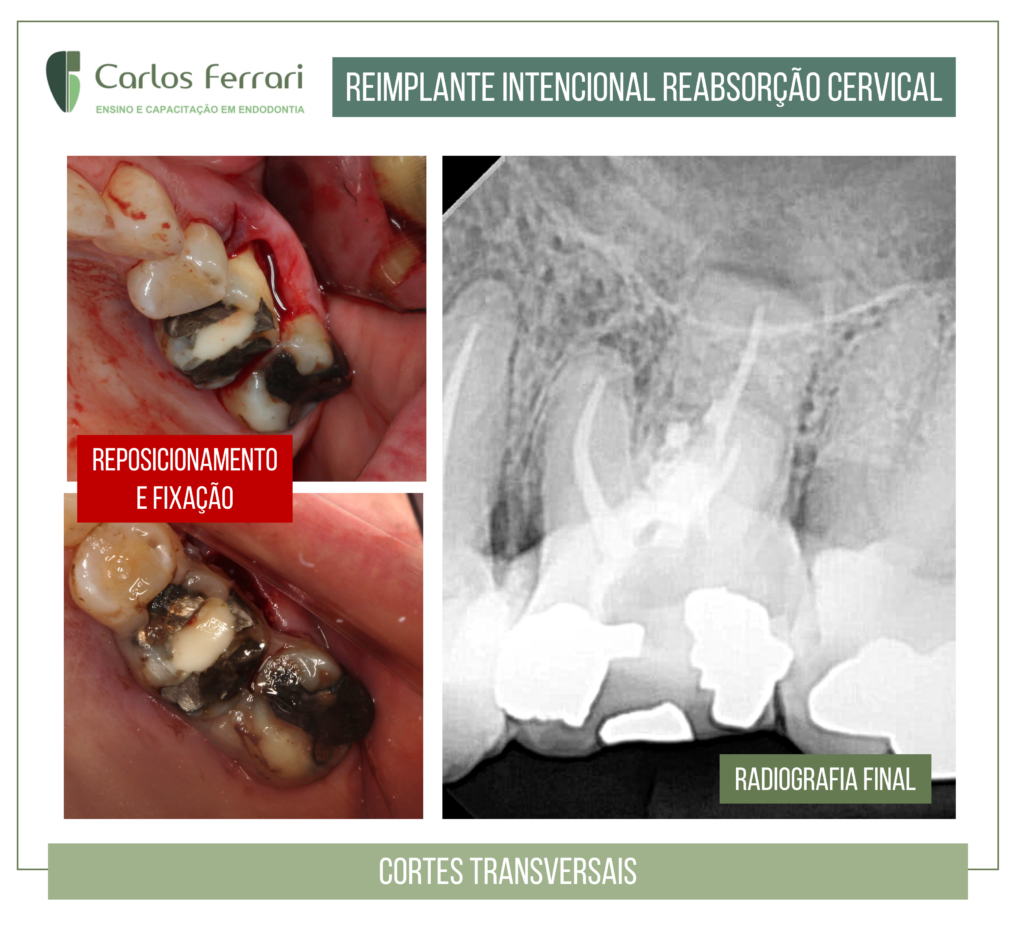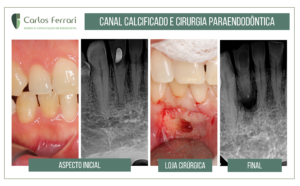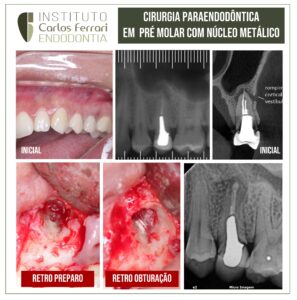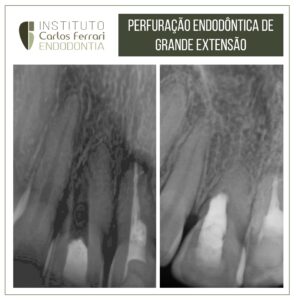Paciente procurou atendimento queixando-se de dor e inchaço na gengiva por palatino. No exame clínico, observou-se edema gengival e sondagem periodontal de 9mm de profundidade na região. Testes de palpação e percussão negativos e vitalidade positivo, com resposta mais exacerbada em relação aos demais dentes, portanto, como diagnóstico pulpar, inflamação pulpar irreversível assintomática. O exame radiográfico e tomográfico revelou imagens compatíveis com reabsorção cervical externa. O tratamento proposto foi endodôntico e cirúrgico com restauração da área reabsorvida, por reimplante intencional.
In: Bueno et al. v. 7 (2018): Anais 8º Congresso da FOA – UNESP:
O reimplante intencional é um tratamento alternativo para a conservação do dente. Consiste na exodontia menos traumática possível, procedimento extraoral e reimplante no alvéolo. Paciente A.R.M., 40 anos, gênero feminino, compareceu à disciplina de Endodontia da Faculdade de Odontologia de Araçatuba – UNESP com queixa de dor, após 6 meses da realização de tratamento endodôntico no dente 37. No exame radiográfico foi constatada sobreobturação, ausência de lesão periapical e coroa cimentada com pinos de fibra de vidro intrarradiculares. O retratamento endodôntico foi descartado devido ao risco de perfuração ou fratura radicular durante a remoção dos pinos, associado à impossibilidade de remoção do material extravasado. A cirurgia parendodôntica foi descartada devido à dificuldade de acesso e a possibilidade de implante foi apresentada, mas não foi aceita devido ao alto custo. Com isso, foi proposto o reimplante intencional. O dente foi extraído e envolvido imediatamente em gaze umedecida com soro fisiológico, permitindo a observação nas raízes se havia ou não a presença de fraturas. Em sequência, foi realizada a apicectomia, seguida do retropreparo com broca de alta rotação sob irrigação com soro fisiológico e retrobturado com agregado de trióxido mineral branco (MTA). Após os procedimento extraorais, o dente foi reimplantado imediatamente no alvéolo e estabilizado com fio de sutura 4-0. Após um ano, a paciente retornou para o controle clínico e radiográfico, no qual observou-se a ausência de sintomatologia à percussão vertical. Após 10 anos, a imagem radiográfica revelou reparo apical, sem evidência de reabsorção radicular ou lesão periapical. No exame clínico havia ausência de dor e mobilidade confirmando o sucesso do tratamento, sugerindo o reimplante intencional uma alternativa válida. Essa técnica pode ajudar a manter um dente em funcionamento em vez de substituí-lo por prótese ou implante dentário.
